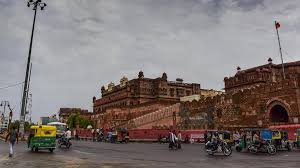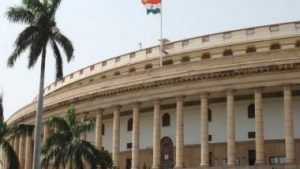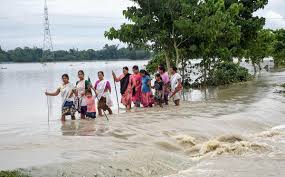Today’s Current Affairs: 11th July 2024 for UPSC IAS exams, State PSC exams, SSC CGL, State SSC, RRB, Railways, Banking Exam & IBPS, etc
Table of Contents
Annual Survey Of Unincorporated Enterprises (2022-23):

The Ministry of Statistics and Programme Implementation (MoSPI) has released the Annual Survey of Unincorporated Enterprises for 2022-23.
- As per the survey, Uttar Pradesh, West Bengal and Maharashtra had the highest share of informal sector enterprises in both rural and urban areas in 2022-23.
- The share of informal sector enterprises decreased in the post-pandemic year 2022-23 in states such as Gujarat, Haryana, Karnataka, Kerala, Madhya Pradesh, Tamil Nadu and West Bengal.
- The state of Uttar Pradesh topped among major states with an increase in the number of unincorporated non-agricultural enterprises.
Share of Informal Sector Enterprises (in 2022-23 as compared to 2021-22):
- Uttar Pradesh: Increased by 0.84% (from 12.99% to 13.83% of total informal sector enterprises(TISE)).
- West Bengal: Decreased by 0.27% (from 12.31% to 12.04% of TISE).
- Maharashtra: Increased by 0.56% (from 8.81% to 9.37% of TISE).
- Delhi: Increased by 0.79% (from 0.64% to 1.43% of TISE).
- Informal sector workers (in 2022-23 as compared to 2021-22):
- Uttar Pradesh: Increased by 0.27 crore from 1.30 crore).
- West Bengal: Increased by 0.03 crore from 1.02 crore)
- Maharashtra: Increased by 16.19 lakh
- Total Workers in Unincorporated Non-Agricultural Sector:
- During 2022-23: Increased by 1.17 crore workers (from 9.79 to 10.96 crore).
- Urban Workers: Increased by 0.69 crore workers (from 5.03 to 5.72 crore).
- Rural Workers: Increased by 0.48 crore workers (from 4.76 to 5.24 crore).
UNESCO Recently Added 11 New Biosphere Reserves Worldwide:

UNESCO recently added 11 new biosphere reserves worldwide, spanning countries like Colombia, Italy, Mongolia, and the Republic of Korea.
- These reserves, including two transboundary sites, aim to conserve biodiversity and cultural heritage amid global biodiversity and climate challenges.
- Biosphere Reserves try to balance economic and social development and maintenance of associated cultural values along with the preservation of nature.
- There are now 759 reserves in 136 countries, including 24 transboundary sites. India has 18 internationally recognized Biosphere reserves, with the Nilgiri reserve being the first.
- The latest addition is Panna in Madhya Pradesh.
- Twelve of the eighteen biosphere reserves are a part of the World Network of Biosphere Reserves, based on the UNESCO Man and the Biosphere (MAB) Programme list.
- November 3 is celebrated as World Biosphere Reserve Day (to raise awareness of the importance of biosphere reserves)
- Biosphere reserves are areas designated by UNESCO to promote the conservation of biodiversity, sustainable development, and scientific research.
- It is managed by Managed under UNESCO’s Man and Biodiversity Programme. They consist of three zones:
- a core zone for the strict protection of ecosystems
- a buffer zone where people live and work in harmony with nature
- a transition zone for sustainable activities.
First State To Adopt a 10-year Road Safety Action Plan:

Rajasthan will become the first state in India to adopt a 10-year road safety action plan aimed at reducing road accidents by 50% by 2030.
Measures included in the Rajasthan government’s 10-Year Road Safety Action Plan:
- Technology Use: Implementation of the iRAD application for online data entry of road accidents.
- Campaigns to raise awareness and bring about behavioural changes regarding road safety rules and provisions.
- Specific Safety Measures:
- Speed Limits: Implementation and enforcement.
- Safe Distance: Promoting safe driving distances.
- Traffic Signals: Improving adherence to traffic signal regulations.
- Road Barriers: Installing and maintaining barriers for enhanced safety.
- Pedestrian Safety: Ensuring safety measures for pedestrians.
- Seatbelt and Helmet Use: Enforcing the use of seatbelts and helmets.
- Vehicle Insurance: Ensuring all vehicles have valid insurance.
- World Bank Assistance: Utilizing the World Bank’s assistance to incorporate international best practices in the preparation of the action plan and road safety policy.
- Coordination Among Stakeholders: Enhanced collaboration among various departments like Transport, Public Works, Police, Medical & Health, and Forest departments for accurate data reporting and successful implementation.
- Workshops and Training: Workshop organized by the State Road Safety Institute aimed at training police personnel on the Integrated Road Accident Database (iRAD) application for effective data entry and analysis of road accidents.
What Is Expunction Powers?

The first special session of the 18th Lok Sabha saw heated debates and clashes between the government and opposition over remarks that led to expunction from records.
- Expunction powers refer to the authority vested in parliamentary presiding officers, such as the Rajya Sabha Chairman and Lok Sabha Speaker, to delete remarks from official records that are deemed defamatory, indecent, unparliamentary, or undignified.
- This process helps maintain decorum and uphold parliamentary standards during debates and proceedings.
- This standard procedure is intended to maintain decorum and uphold parliamentary etiquette.
- The presiding officers, under Rules 261 (Rajya Sabha) and 380 (Lok Sabha), can order the deletion of objectionable remarks during debates.
- Expunged portions are marked and excluded from official records to prevent their circulation, although challenges persist in the digital age with live telecasts and social media dissemination.
Aphelion : 5th July 2024

On 5th July 2024 , Earth reached the farthest point in its elliptical orbit around the sun called aphelion. Earth moves around the sun in elliptical orbit and thus its distance from the sun fluctuates slightly throughout the year.
- Aphelion refers to the point in Earth’s orbit when it is farthest from the Sun, occurring around 3 to 6th July each year
- The Earth’s perihelion and aphelion dates are not fixed due to variations in its orbit eccentricity.
- At this juncture, the distance between Earth and the Sun extends to approximately 152.5 million kilometres.
- At Perihelion, Earth is closest to the Sun, occurring around January 3 annually, with a distance of approximately 147.5 million kilometres.
Floods In Assam : In News

Floods in Assam have resulted in over 50 deaths, displacing 360,000 people.
- More than 40,000 hectares of crops and 130 wild animals have been affected by flooding.
Causes of Regular Floods in Assam:
- Assam has more than 120 rivers, several of which originate from the hills and mountains of extreme rainfall hotspots in Arunachal Pradesh and Meghalaya as well as in China and Bhutan.
- The Brahmaputra river, flowing through Assam, accumulates significant sediment as it reaches the lower elevation of Assam, slowing down and depositing sediment and debris.
- In summer, sedimentation intensifies due to soil erosion from glacier melting.
- The monsoon is intense in the Northeast. According to the State Disaster Management Authority, annual rainfall averages around 2900 mm with maximum precipitation in June and July.
- As per data from Assam government, 85% of the annual rainfall in the Brahmaputra basin takes place during the monsoon months.
- It also gets a good amount of rainfall in April and May due to thunderstorm (Kalbaisakhi) activities which account for flooding during heavy rain in June.
- The melting of glaciers and snow caps in the Tibetan Plateau due to global warming and climate change is causing increased water flow in the Brahmaputra River, impacting downstream regions like Assam with more frequent flooding.




